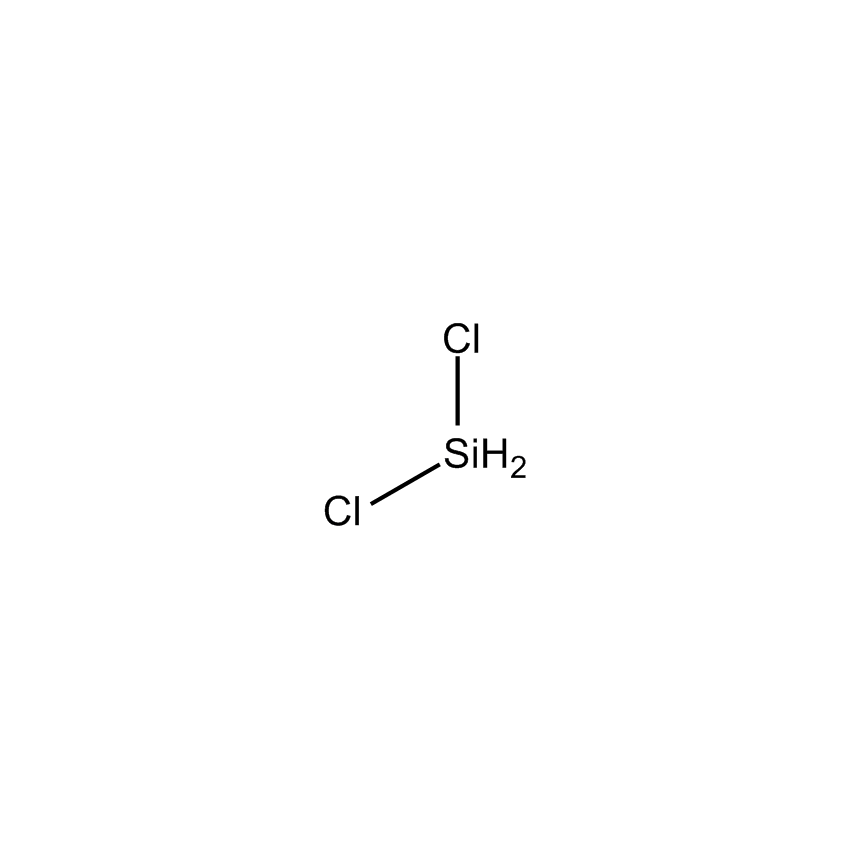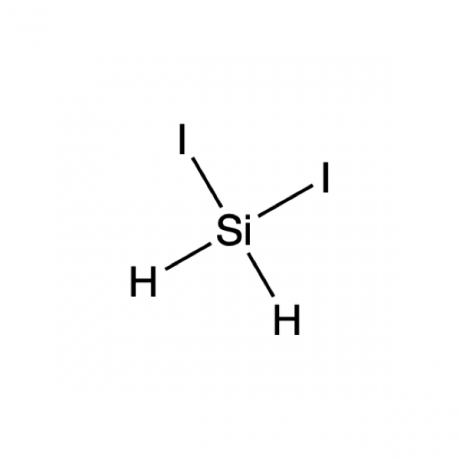Additional Properties
- Einecs Number 223-888-3
- Synonyms DCS
- HMIS 4-4-3-X
- Molecular Formula H2Cl2Si
- Molecular Weight (g/mol) 101.01
- Purity (%) 97%
- TSCA Yes
- Delta H Vaporization (kJ/mol) 6.5 kcal/mole
- Autoignition Temp (˚C) 57.8
- Boiling Point (˚C/mmHg) 8.3
- Density (g/mL) 1.22
- Density Temperature (˚C) 7
- Flash Point (˚C) -37 °C
- Melting Point (˚C) -122°
Safety
Dialkyl Silane Reducing Agent
Organosilanes are hydrocarbon-like and possess the ability to serve as both ionic and free-radical reducing agents. These reagents and their reaction by-products are safer and more easily handled and disposed than many other reducing agents. The metallic nature of silicon and its low electronegativity relative to hydrogen lead to polarization of the Si-H bond yielding a hydridic hydrogen and a milder reducing agent compared to aluminum-, boron-, and other metal-based hydrides. A summary of some key silane reductions are presented in Table 1 of the Silicon-Based Reducing Agents brochure.
ALD Material
Atomic layer deposition (ALD) is a chemically self-limiting deposition technique that is based on the sequential use of a gaseous chemical process. A thin film (as fine as -0.1 Å per cycle) results from repeating the deposition sequence as many times as needed to reach a certain thickness. The major characteristic of the films is the resulting conformality and the controlled deposition manner. Precursor selection is key in ALD processes, namely finding molecules which will have enough reactivity to produce the desired films yet are stable enough to be handled and safely delivered to the reaction chamber.
Dichlorosilane; Silicomethylene chloride; Dihydridodichlorosilane
CAUTION: CAN FORM PYROPHORIC REACTION PRODUCTS ON CONTACT WITH WATER OR AMINES
AIR TRANSPORT FORBIDDEN
Silicon Chemistry, Articles
The Si-H bond, based on the relative electrongativities of Si and H, is polarised such that the hydrogen is slightly hydridic in nature. The fact that the silanes are not strongly hydridic makes them excellent candidates for mild and selective reductions of organic functional groups.
Silicon Chemistry, Articles
The reduction of a comprehensive range of organic functional groups ranging from carboxylic acids to aryl fluorides have been shown to be possible with a variety of organosilanes. A comprehensive review of the ionic and transition metal-catalyzed reductions of organic functional groups has recently appeared.
Silicon Chemistry, Articles
Silicon Chemistry, Articles
Some of the general approaches to the key steps in the synthesis of gliflozins, a class of glucose transporters, are discussed. In particular the glycosidation step for the introduction of the key aryl moiety onto the glucose and the reduction steps are presented. Click here for more product information on tetramethyldisiloxane (TMDO, TMDS) reducing agent.



